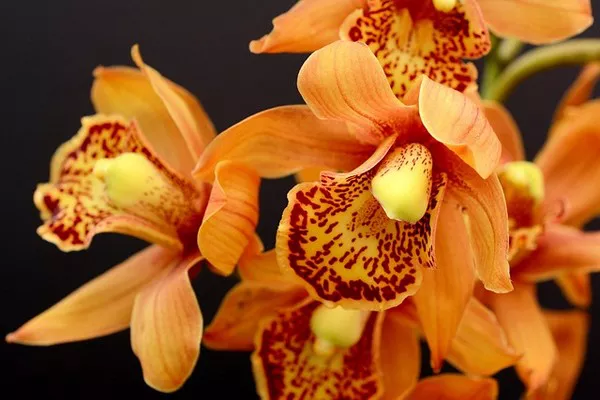Flowers, with their delicate and captivating beauty, have been admired for centuries as symbols of love, beauty, and celebration. One way to prolong their beauty and create lasting memories is by drying them. Drying flowers is an age-old technique that allows you to preserve their colors, shapes, and fragrances. Whether you’re a gardening enthusiast looking to immortalize your garden’s blooms or someone who wishes to cherish a special bouquet, mastering the art of drying flowers can be both rewarding and therapeutic. In this guide, we will explore various methods and best practices to help you dry flowers while maintaining their natural allure.
Benefits of Drying Flowers
Drying flowers serves as more than just a means of preservation; it’s a way to capture nature’s artistry and extend its presence beyond its natural lifespan. The benefits of drying flowers include:
Preservation of Memories: Dried flowers hold sentimental value and serve as a tangible reminder of special occasions, such as weddings, birthdays, or anniversaries.
Eco-Friendly Decor: Dried flowers are a sustainable alternative to fresh cut flowers, reducing the need for constant replacements and minimizing environmental impact.
Creative Expression: Dried flowers can be used in various creative projects, from crafting wreaths and arrangements to making potpourri and framed artworks.
Year-Round Beauty: Drying flowers allows you to enjoy your favorite blooms even during off-seasons, bringing a touch of nature indoors regardless of the time of year.
Choosing the Right Flowers
Not all flowers are equally suited for drying. Some varieties maintain their color and shape better than others when dried. Here are some popular options to consider:
Lavender: Known for its soothing aroma, lavender retains its fragrance and color remarkably well during the drying process.
Roses: Roses come in a multitude of colors and shapes, making them an excellent choice for drying. Dark-colored roses often dry better than lighter ones.
Eucalyptus: With its elegant leaves and refreshing scent, eucalyptus is a popular choice for creating dried arrangements.
Baby’s Breath: This delicate filler flower dries beautifully and complements other dried flowers in various arrangements.
Methods of Drying Flowers
There are several methods you can use to dry flowers, each with its own benefits and considerations. The three primary methods are air drying, using desiccants, and microwave drying.
Air Drying:
This traditional method involves hanging flowers upside down in a cool, dry, and dark place. Bundle small groups of flowers together and hang them from a hook or string. Ensure good airflow to prevent mold growth. Air drying is suitable for sturdy flowers like roses, lavender, and daisies.
Desiccants:
Desiccants are substances that absorb moisture from flowers, allowing them to dry quickly and retain their shape and color. Common desiccants include silica gel, sand, and borax. Place a layer of desiccant at the bottom of an airtight container, arrange flowers on top, and then cover them completely with more desiccant. Seal the container and leave it for a week or two.
Microwave Drying:
Microwave drying is a faster method that preserves the color of flowers more effectively. Place the flowers between layers of absorbent paper and microwave them at low power for short intervals. Be cautious not to overheat or scorch the flowers.
Best Practices for Drying Flowers
Regardless of the method you choose, following these best practices will help ensure successful results:
Harvest at the Right Time: Choose flowers that are in their prime but not overly mature. Early morning is the best time to harvest, as the flowers’ moisture content is lowest at this time.
Remove Excess Foliage: Trim away excess leaves and foliage, as they can contribute to mold growth during the drying process.
Handle Gently: Flowers are fragile when dried, so handle them gently to avoid breakage.
Monitor Progress: Regularly check on your drying flowers to ensure they are drying evenly and without any signs of mold.
Patience is Key: Drying flowers is a gradual process that requires patience. Rushing can lead to disappointing results.
Creative Uses for Dried Flowers
Once your flowers are dried, you can explore various creative avenues to display and enjoy their beauty:
Arrangements: Create intricate dried flower arrangements by combining different types of blooms, foliage, and textures.
Wreaths: Craft beautiful wreaths that can be displayed on doors, walls, or tables, adding a touch of natural elegance to any space.
Pressed Artwork: Press dried flowers between heavy books to flatten them, then use them to create charming artworks or decorative cards.
Potpourri: Mix dried flowers with essential oils and herbs to create fragrant potpourri that can infuse your living spaces with a delightful aroma.
Conclusion
Drying flowers is an art that allows you to capture nature’s beauty and preserve it for years to come. With a variety of drying methods and a touch of creativity, you can transform fresh blooms into timeless treasures. Whether you’re interested in making thoughtful gifts or simply wish to bring the beauty of the outdoors into your home, the art of drying flowers offers endless possibilities for self-expression and enjoyment.


